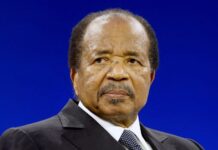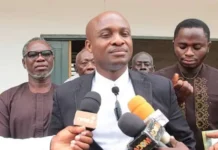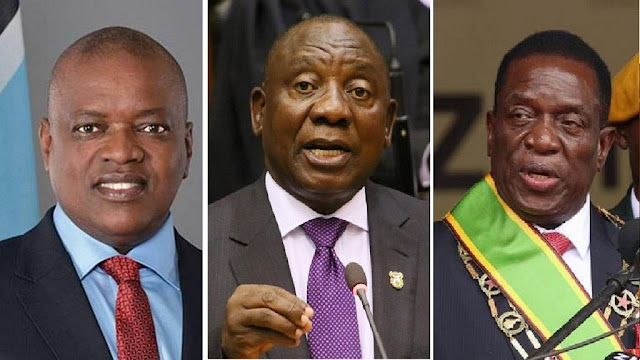 |
| Changing presidents without elections in Zimbabwe, South Africa and Botswana |
The convention across most of Africa is that a new president is usually sworn in after elections. Some countries allow vice presidents to complete the terms of their bosses in case of death or resignation. Elsewhere, there is the need for a by-election for the next president to be chosen.
The southern Africa region has in less than six months sworn-in three leaders without substantive elections – Zimbabwe, South Africa and Botswana.
Zimbabwe in November last year, South Africa in February 2018 and Botswana on April 1, 2018. This article looks at the three instances exploring the specific dynamics that underline each of them.
Mugabe’s decades reign ends with resignation
In Zimbabwe, the unlikeliest of political situations played out when long serving leader, Robert Gabriel Mugabe, was forced to resign his post after over 30 years in charge.
Mugabe fired his vice-president Emmerson Mnangagwa leading to the intervention of the army. In the end, street protests, regional mediation led by South Africa, pressure from ruling Zanu-PF and threat of parliamentary impeachment forced Mugabe to step down.
His exiled vice-president returned from South Africa to assume leadership of the ruling party and to ascend to the presidency. Mnangagwa will see out Mugabe’s mandate ahead of elections scheduled for later this year.
Jacob Zuma’s roller coaster presidency ends with resignation
In South Africa, embattled president Jacob Zuma went out through the same door he came in. Zuma backed a recall by the ruling Africa National Congress (ANC) of then President Thabo Mbeki. Mbeki had earlier fired Zuma as his vice over corruption scandals.
As is the case in South Africa, the president is deployed by the party that holds a parliamentary majority. So when the ANC went to Congress in December 2017 and elected Zuma’s deputy, Cyril Ramaphosa, as leader, talk of two centers of power came up.
After a series of negotiations within the ANC as a party and in parliament, backed by a massive opposition push for Zuma to be impeached, he resigned his post giving way for Ramaphosa to be sworn in as president of the republic.
Botswana’s Khama steps down for Masisi
Botswana Democratic Party (BDP), the country’s ruling party, has a rule of substantive presidents stepping down eighteen months to the end of their second and final terms in office. The measure is to allow the vice to become president and govern till the next elections.
So, Seretse Ian Khama’s stepping down as fourth president of the country was known long before April 1 when Mokgweetsi Eric Masisi was sworn into office as the fifth president of the diamond-rich country.
Khama, a former soldier had also benefitted from a similar arrangement when Festus Mogae stepped down in 2008. However, when a president steps down, his vice is sworn in as substantive president. Masisi’s vice will be sworn in today.
credit: Africa News


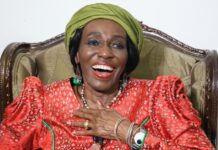







![Queenlet Ft Jimmy D Psalmist, One Month Old Song Received Two Nominations with Over 208k Views On YouTube [Video] Soakat Artiste QueenLet And Minister Jimmy D Psalmist](https://ghanasky.com/wp-content/uploads/2021/12/Queenlet-JimmyDpsalmist-720x720-1.jpg)


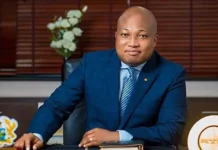
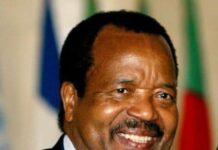










![Messi World Cup magic and Alvarez double books final spot, Argentina vs Croatia (3-0) highlights [Video] Argentina vs Croatia (3-0)](https://ghanasky.com/wp-content/uploads/2022/12/argentina-vs-Croatia.jpg)

![Morocco vs Spain (0-0) (3-0): Morocco knock out Spain on 3-0 penalties to reach FIFA World Cup 2022 quarter-final [Video] Morocco knock out Spain on 3-0 penalties](https://ghanasky.com/wp-content/uploads/2022/12/Watch-Morocco-vs-Spain-0-0-and-3-0-penalties.jpg)


